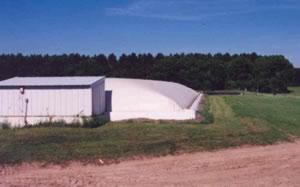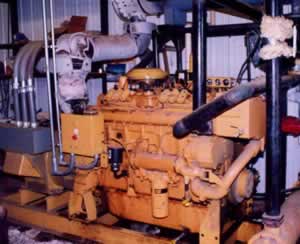
From the Minnesota Department of Agriculture
Anaerobic manure digesters (also called methane digesters) collect manure and convert the energy stored in its organic matter into methane, which is used to produce energy (gas or electricity) for on-farm or off-farm use. The conversion to methane is the result of anaerobic digestion—a biochemical process in which organic matter is decomposed by bacteria in the absence of oxygen. Digesters must be airtight (no oxygen) for anaerobic digestion to occur.
Methane is often called biogas; technically, biogas is methane plus other anaerobic digestion byproducts. At any rate, the gas is flared or combusted to generate energy—a process with multiple other benefits including (among others) significantly reduced feedlot odors and greenhouse gas emissions.
 Generally, manure used in digesters should have a total solids concentration of 14% or less and be mostly free of soil, sand, stones or fibrous bedding material (it can be processed to remove these materials). Supplemental feedstocks such as food processing wastes and wastewater can often be added to manure digesters.
Generally, manure used in digesters should have a total solids concentration of 14% or less and be mostly free of soil, sand, stones or fibrous bedding material (it can be processed to remove these materials). Supplemental feedstocks such as food processing wastes and wastewater can often be added to manure digesters.
Why consider an anaerobic digester on your farm?
Environmental benefits:
Turns manure into a source of renewable energy
Improves air quality by reducing odors and greenhouse gas emissions
Protects water quality by reducing the potential for pathogens to enter surface or ground water
Practical benefits:
Generates energy that can be sold
Generates heat or other energy for on-farm use
May qualify for carbon credit payments
Aids manure management by making solid-liquid separation easier
Results in potentially higher-quality manure for use on crops (more nutrient-rich and fewer weed seeds)
Enables animal bedding to be reused
Reduces feedlot problems with flies
